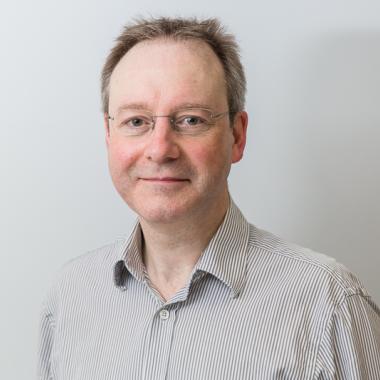- Architectural Humanities
About me
Having taught for a number of years as a visiting lecturer in the department of Architecture, I joined the University of Westminster as a full-time academic in 2001. My connection with Westminster began much earlier, however, when it was still the Polytechnic of Central London. As a student of Architecture at PCL, I was taught by a number of influential figures including David Greene and Robin Evans, whose work on the history of architectural representation inspired me to study both architectural history and its relation to mathematics and geometry.
I went on to work for several years in practice where I gained experience working on a range of architectural projects. In practice, my interest in geometry provided the opportunity to specialise in the application of digital technology to the design, modelling and analysis of built form. But throughout this period, my academic interests developed alongside my work in practice and research into the history of mathematics and science informed both my architectural design work, and subsequently, my teaching. Now as a full-time academic I combine teaching architectural computing and history and theory with research in both of these areas. I am also a regular contributor to international conferences, journals and other publications.
Teaching
In my teaching, as with my research, I am interested in the relationship between architecture and science and in particular the way scientific ideas and representational practices have provided models for spatial experience and have shaped the way architecture is conceived and understood. But alongside my interest in the history of architecture, mathematics and science, I have also maintained an interest in architectural computing that has significantly informed the nature of my teaching. An important aspect of this work is therefore about situating contemporary technology and design techniques in an historical context. As a result my teaching comprises a unique mix of history and theory and computing.
My current responsibilities include acting as coordinator for master’s level courses across the Architecture department; course leader for the Digital Media pathway of the MA Architecture; and tutor in design computing and history and theory on the MArch (RIBA part 2). As an MA thesis tutor I supervise design based masters projects and as an MArch history and theory tutor I supervise written dissertations. These have included two RIBA President’s Medals dissertation medal winners: Joanna Rapp, ‘A geometrical analysis of multiple view-point perspective in the work of Giovanni Battista Piranesi’ (2007) and Rebecca Gregory, ‘The Art of Skew Bridges’ (2009).
I have also acted as external examiner for MPhil and PhD awards at both the Royal College of Arts in London and the University of Technology in Sydney.
Research
My research looks primarily at the role played by science and mathematics in early modernism. My particular interest, however, is in the nature of architectural representation. This interest began with the work of Buckminster Fuller and Theo van Doesburg both of whom drew on mathematical ideas concerning n-dimensional geometry and the “fourth dimension”. Later, my attention shifted to Russian constructivist, El Lissitzky, and in recent years I have been concentrating on Le Corbusier and the nineteenth-century science of physiological optics. This current study has lead me to look at the many ways in which the work of avant-garde architects and artists in the early part of the twentieth century was informed by discoveries made in psychology – including stereoscopic vision and other aspects of visual space perception. This research has also formed the basis for my PhD thesis currently in the final stages of completion under the supervision of Professor Philip Steadman at University College London.
Over the years, in addition to numerous publications, my research has provided the opportunity to contribute to many events and conferences including :
‘Stereoscopic Projection: Drawing in Stereoscopic Space’ (Ambiguous figures and the role of stereoscopic drawing), The Practice of Drawing Lines: Architecture and Art, Symposium, University of Technology, Sydney, Australia, 2013.
‘Le Corbusier, Still Life and Stereoscopic Space’ (Stereopsis and space in the work of Le Corbusier), Architectural Objects: Discussing spatial form across art histories, Association of Art Historians Summer Symposium, Henry Moore Institute, Leeds, 2010.
‘Developed Space: The Chambre de Fleurs’ (Theo van Doesburg and his use of axonometric, development and the four-dimensional cube) Models and Drawings: The Invisible Nature of Architecture, Architectural Humanities Research Association, University of Nottingham, 2005.
‘Delineated Space’ (Theo van Doesburg and Cecil Balmond: geometry, representation and spatial experience), Enacting New Synergies in Arts and Sciences,Research Centre on Literature and Cognition and the University of Paris, 2004.
‘The Conflated Image’ (Henri Poincaré, Four dimensional visual space perception and the Stereoscope), Society for Literature, Science and the Arts, 17th Annual Conference: Rethinking Space and Time Across Science, Literature and the Arts, University of Texas at Austin, 2003.
